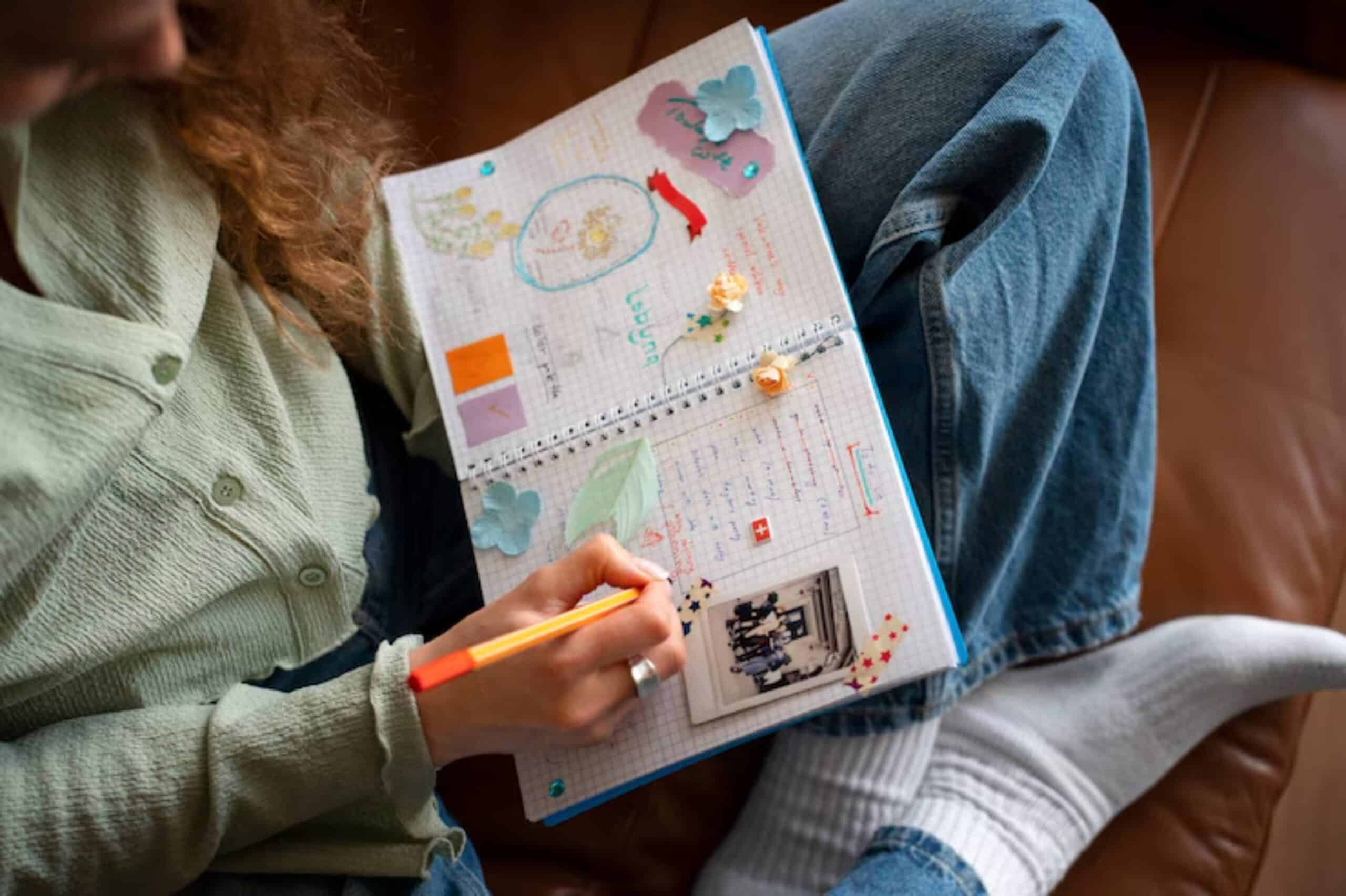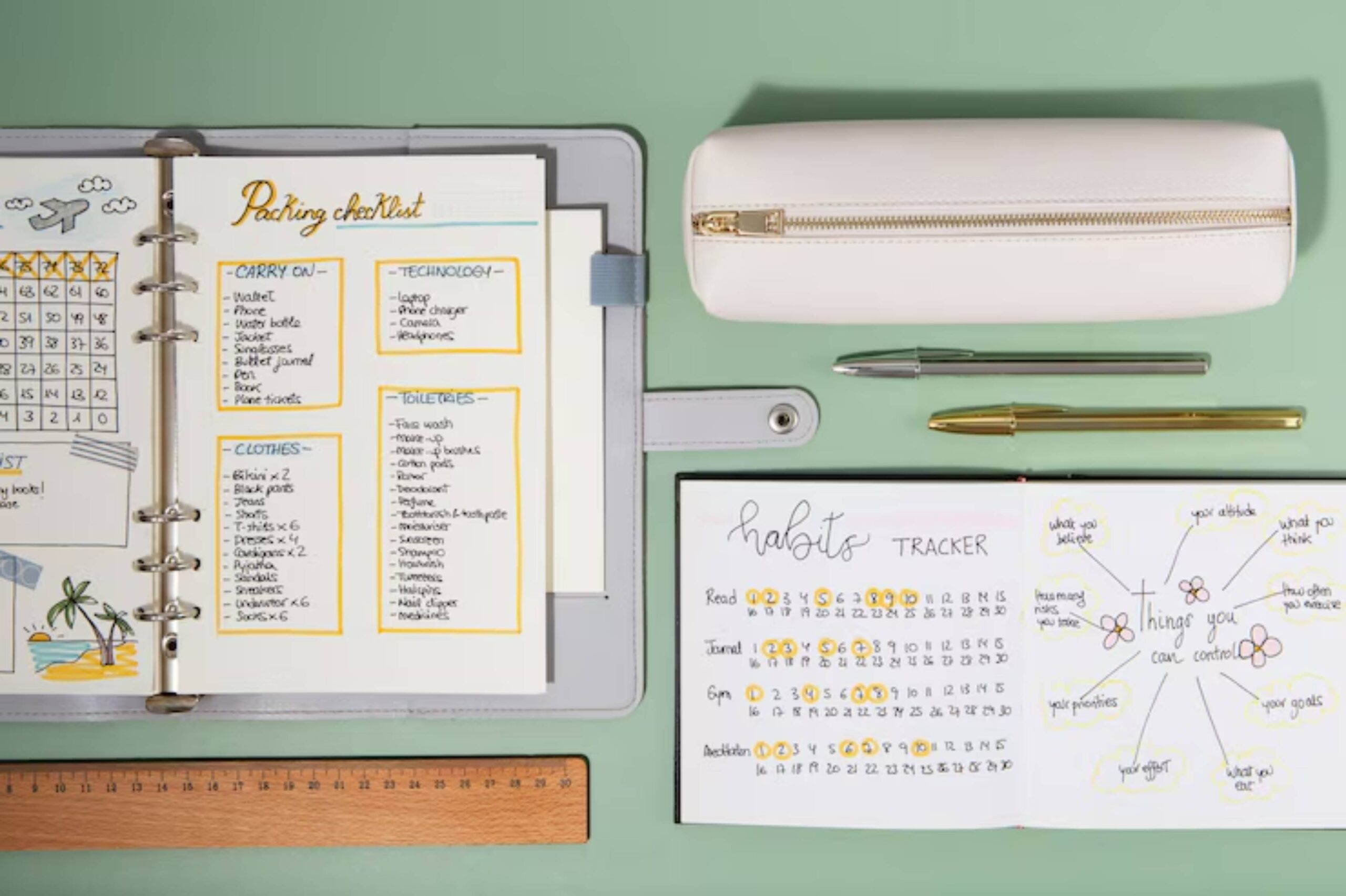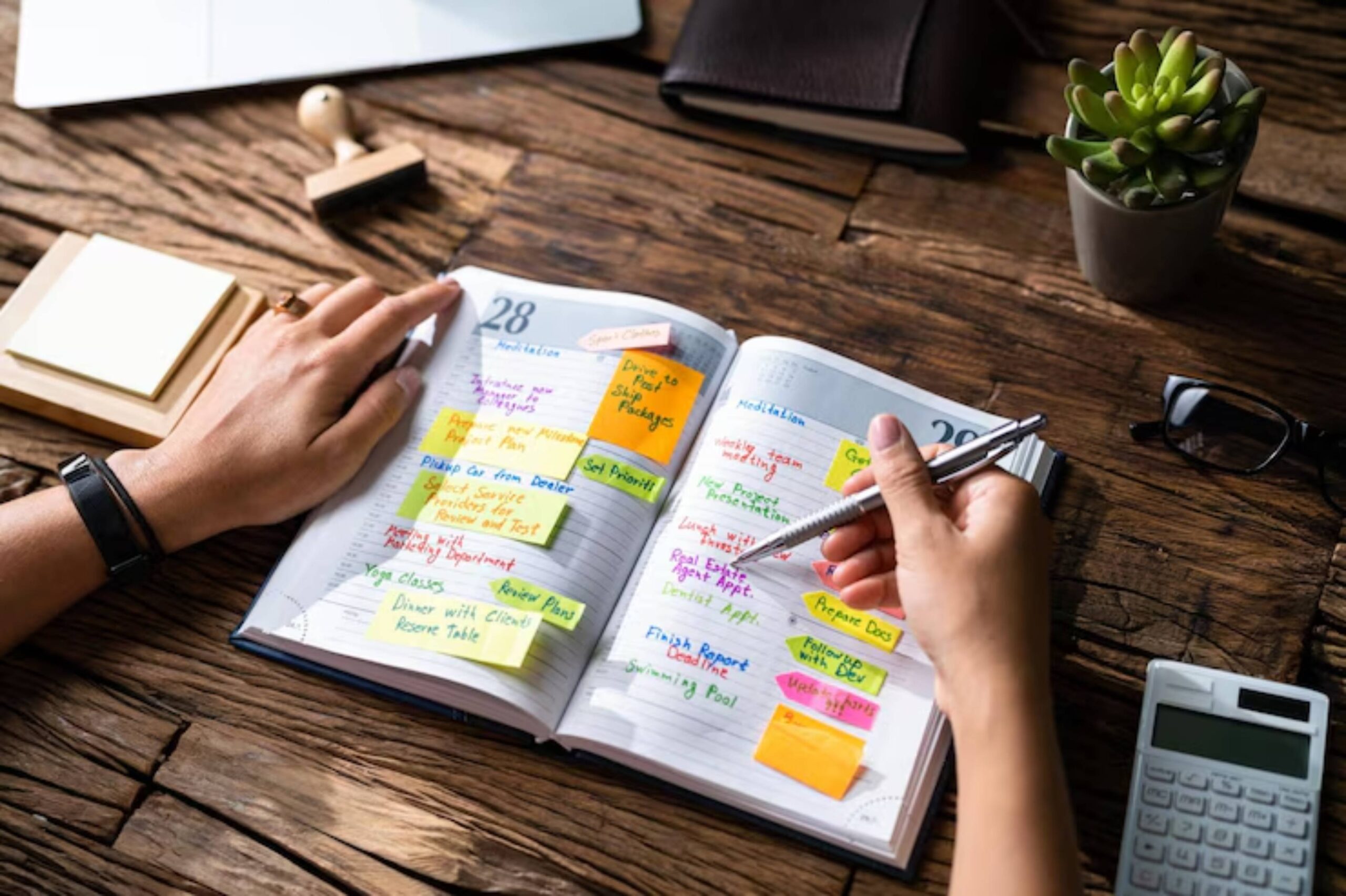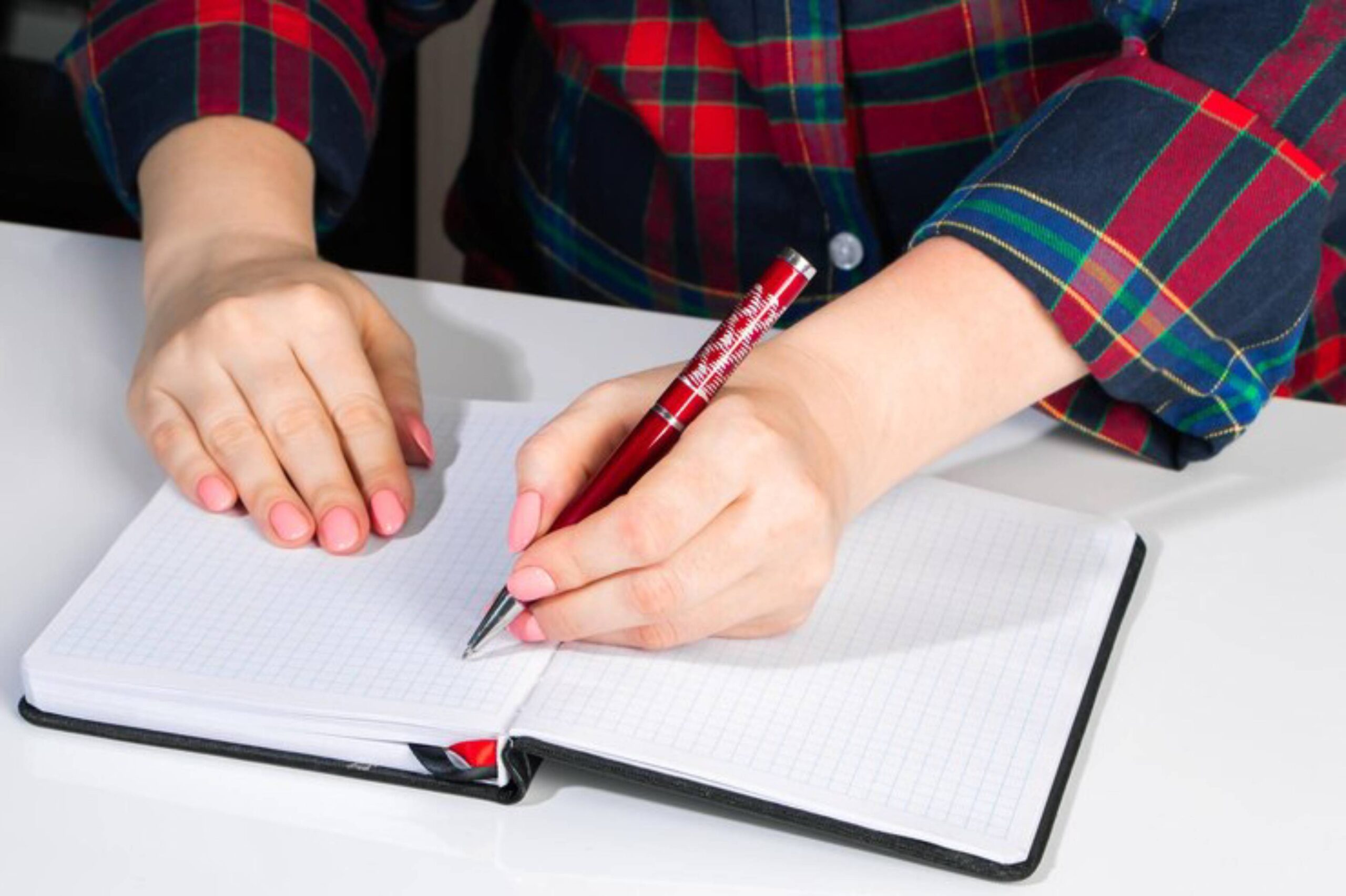
Bullet Journaling for Mental Organisation
If your brain feels like a browser with too many tabs open, you’re not alone. Between work, family, personal goals, and that mental checklist that never quits, staying organised can feel overwhelming. The solution? A system that helps you keep track without losing track of yourself.
That’s where bullet journaling shines.
What started as a minimalist note-taking method has become a powerful tool for mental clarity, focus, and productivity. More than just a to-do list, bullet journaling helps you organise thoughts, manage time, and gain insight into your habits — all in one place.
In this blog, we’ll explore how to use a bullet journal to support your mental organisation, enhance focus, and build sustainable productivity journaling routines.

What Is Bullet Journaling?
Bullet journaling (or BuJo) is a customisable journaling system created by Ryder Carroll. It combines rapid logging, goal setting, planning, and reflection in a format that’s both structured and flexible.
The core idea is simple: log your tasks, events, and thoughts using bullets, symbols, and short sentences, all within a single notebook.
Key Components:
- Index – Helps you find specific entries
- Future Log – Long-term planning (months ahead)
- Monthly Log – Overview of goals and events
- Daily Log – Day-to-day tasks, notes, thoughts
- Collections – Custom pages like habit trackers, mood logs, meal planning, etc.
This format allows for both structure and creativity, making it ideal for taming a scattered mind.
See how morning journaling helps cement positive routines and keeps your day aligned.
Why Bullet Journaling Supports Mental Clarity
A cluttered mind makes it harder to make decisions, stay productive, or feel calm. Bullet journaling reduces cognitive overload by offloading everything you’re trying to remember into a physical system.
How it helps with mental clarity:
- Externalizes thoughts – Reduces mental clutter
- Clarifies priorities – Separates “must-do” from “nice-to-do”
- Improves memory – Writing things down helps you retain information
- Enhances self-awareness – Tracks patterns in mood, habits, and triggers
Think of it as a personal command centre — one that lets you see your thoughts clearly instead of juggling them in your head.
The Productivity Power of a Bullet Journal
While digital apps can be helpful, many people find that productivity journaling works best when it’s tactile. The act of writing by hand activates different parts of your brain and helps you stay engaged with what matters most.
Benefits for productivity:
- Daily focus: Start your day by writing out what truly matters
- Time tracking: Notice where your energy goes and make adjustments
- Habit tracking: Spot what’s helping or hurting your routine
- Review and reflect: End your day with a short summary or rating
Bullet Journal Methods to Organise Thoughts
There are dozens of ways to structure your bullet journal — the beauty is that it’s entirely yours.
But if your goal is organizing thoughts and streamlining your brain, here are a few layouts to try:
1. Brain Dump Page
What it is: A no-rules space where you offload every idea, task, or worry crowding your mind.
Why it works: Clears mental clutter fast.
Use once a week or whenever you feel overwhelmed.

2. Priority Matrix
What it is: A page split into four quadrants: Urgent/Important, Not Urgent/Important, Urgent/Not Important, Not Urgent/Not Important.
Why it works: It helps you separate tasks by priority instead of urgency.
3. Thought Tracker
What it is: A simple log where you jot down recurring thoughts, worries, or ideas.
Why it works: Helps identify cognitive loops, limiting beliefs, or creative patterns.
4. Monthly Goals + Microtasks
What it is: A two-page spread where you break larger goals into smaller, actionable items.
Why it works: Prevents procrastination and reduces goal overwhelm.
5. Mood + Mind Check-Ins
What it is: A visual log of your mood, energy, or focus levels over time.
Why it works: It lets you see how your mind and emotions shift across days and weeks.
For deeper emotional tracking, explore how to measure emotional progress through journaling.
How to Start Your Bullet Journal Without Overthinking
You don’t need to be an artist or a perfectionist. The goal isn’t aesthetic — it’s clarity.

Quick-start steps:
- Choose your notebook. Any blank or dotted journal will do.
- Create an index, leave 2 pages at the front for it.
- Set up your future, monthly, and daily logs
- Add collections that reflect your needs: Try habits, goals, or mood logs
- Use symbols consistently: e.g., • for tasks, ○ for events, – for notes, ✗ for cancelled
Don’t wait for the perfect layout. Start messy, adjust as you go.
Real People, Real Results
Sophie, 34 – Copywriter “I used to jump between 10 apps. Now everything — my tasks, my mental health tracker, even my budget — lives in my bullet journal. It’s helped me feel in control again.”
Liam, 26 – Postgrad Student “Brain dumping every Sunday has changed how I think. I no longer carry a dozen to-dos in my head. I write it down, prioritize it, and move forward.”
The results? Less stress, more focus, and better balance.
Build a Sustainable Bullet Journaling Habit
Starting is one thing. Sticking with it is what brings the benefits.
Make it stick:
- Keep it visible: Leave your journal on your desk or bedside
- Set a 5-minute rule: Just open it and write one line
- Reflect weekly: Review what worked and what needs shifting
- Customize over time: Let it evolve with your life, not lock you into a rigid system
Over time, your bullet journal becomes a mirror, showing you where your energy goes and how to direct it with intention.
Conclusion: One Notebook, Infinite Clarity
You don’t need more apps or rigid systems. Sometimes, all you need is one notebook and a clear structure to bring order to chaos.
A bullet journal supports mental clarity by giving your thoughts a home — no more juggling reminders, tasks, worries, and goals in your head. Whether you’re using it to organize your workday, your feelings, or your future plans, it’s a low-tech, high-impact habit that brings clarity and confidence.
So grab a pen. Start simple. And let your journal become your most grounded daily companion.